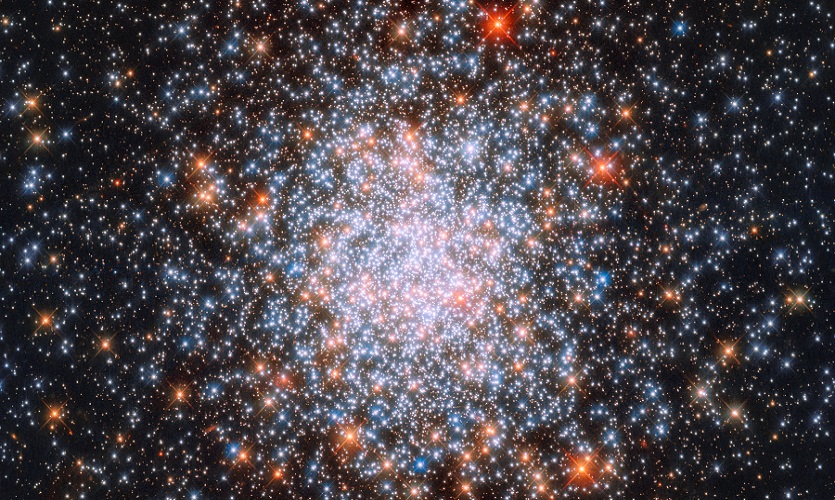Milky Way research earns Parliament invite

(IMAGE: Globular Cluster 1866 located in the Large Megallanic Cloud)
Early-career researcher Hannah Dalgleish was invited to Parliament after making a new discovery about the Milky Way.
The PhD student in Astronomy was accepted to join some of Britain’s brightest young scientists for STEM for Britain, to mark British Science Week (March 6-15).
Hannah recently published new evidence that contradicts theories of how star clusters contribute to our knowledge of galaxies. Star clusters are groups of hundreds of thousands of ancient stars, held together by gravity.
Her paper in the Monthly Notices of the Royal Astronomical Society observed that mass-to-light ratios of star clusters, or ‘globular clusters’ disagree with theoretical predictions. This is significant because models of how stars evolve underpin most of astronomy!
'Tidal forces'
Hannah said: “It looks like the disagreement comes from the fact that star clusters near the centre of the Milky Way experience a lot more tidal forces – essentially because there's a lot more mass, and therefore gravitational pull – which hasn't been taken into account by the theoretical models.”
She adds that it could have significant implications on how we measure fundamental properties of distant galaxies.
Specifically, her work compared the observed and predicted mass-to-light ratios of 59 globular clusters within our galaxy, the Milky Way. Observations of the most ancient clusters agreed with theory but she found that those of newly observed, younger clusters disagreed by a factor of two.
After further investigation, it seems that the cause could be related to the unusual location of the younger clusters — at the centre of the Milky Way — as opposed to most other clusters which are located out in the Galactic halo. The closer a cluster is to the centre of the galaxy, the stronger the dynamical effects upon it. Such tidal interactions can ultimately lead to a change in cluster mass.
Sci-fi youth
Hannah, who joined the Astrophysics Research Institute in 2016 is a graduate of the University of St Andrews, and a former intern at the European Southern Observatory in Munich. She grew up watching (too much?) sci-fi and has been hooked on the Milky Way ever since she saw it in Poland – without light pollution – at the age of 17.
She has previously spoken in parliament at the science Voice of the Future event in 2019.
Her next project looks at even younger star clusters in the Magellanic Clouds, the Milky Way’s satellite galaxies, in which she aims to disentangle the effects of age and location on the mass-to-light ratio, and hone in on the exact cause of the discrepancy.
She adds: “As technology advances and with instruments like the James Webb Space Telescope on the horizon, who knows what other unexpected cluster-related discoveries are in store.”
Her paper The WAGGS project–III. Discrepant mass-to-light ratios of Galactic globular clusters at high metallicity includes research from LJMU researchers Dr Seb Kamann, Dr Chris Usher, Prof Nate Bastian, Dr Josh Veitch-Michaelis, and Silvia Martocchia.


